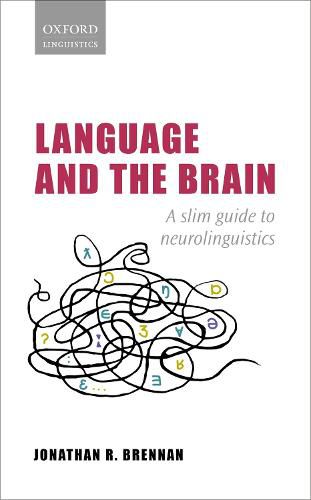Readings Newsletter
Become a Readings Member to make your shopping experience even easier.
Sign in or sign up for free!
You’re not far away from qualifying for FREE standard shipping within Australia
You’ve qualified for FREE standard shipping within Australia
The cart is loading…






This book introduces readers to the state-of-the-art neuroscientific research that is revolutionizing our understanding of language. Interest in the brain bases of language goes back to the birth of the modern neurosciences in the late nineteenth century. Today, tools such as fMRI and EEG allow us to study brain activity non-invasively as people perform complex cognitive tasks like talking or reading. In this book, Jonathan Brennan shows how brain signals are connected with the intricate cognitive structures that underlie human language. Each chapter focuses on specific insights including the neural codes for speech perception, meaning, and sentence structure. The book also explores larger themes such as how to connect abstract notions like knowing a language to concrete signals that are measured in a laboratory, and how to reconcile apparently conflicting pieces of data that arise from different experiments. Written in an accessible, conversational style, and featuring a glossary of key terms, this slim guide will appeal to a wide range of readers interested in how the human brain allows us to use language.
$9.00 standard shipping within Australia
FREE standard shipping within Australia for orders over $100.00
Express & International shipping calculated at checkout
This book introduces readers to the state-of-the-art neuroscientific research that is revolutionizing our understanding of language. Interest in the brain bases of language goes back to the birth of the modern neurosciences in the late nineteenth century. Today, tools such as fMRI and EEG allow us to study brain activity non-invasively as people perform complex cognitive tasks like talking or reading. In this book, Jonathan Brennan shows how brain signals are connected with the intricate cognitive structures that underlie human language. Each chapter focuses on specific insights including the neural codes for speech perception, meaning, and sentence structure. The book also explores larger themes such as how to connect abstract notions like knowing a language to concrete signals that are measured in a laboratory, and how to reconcile apparently conflicting pieces of data that arise from different experiments. Written in an accessible, conversational style, and featuring a glossary of key terms, this slim guide will appeal to a wide range of readers interested in how the human brain allows us to use language.